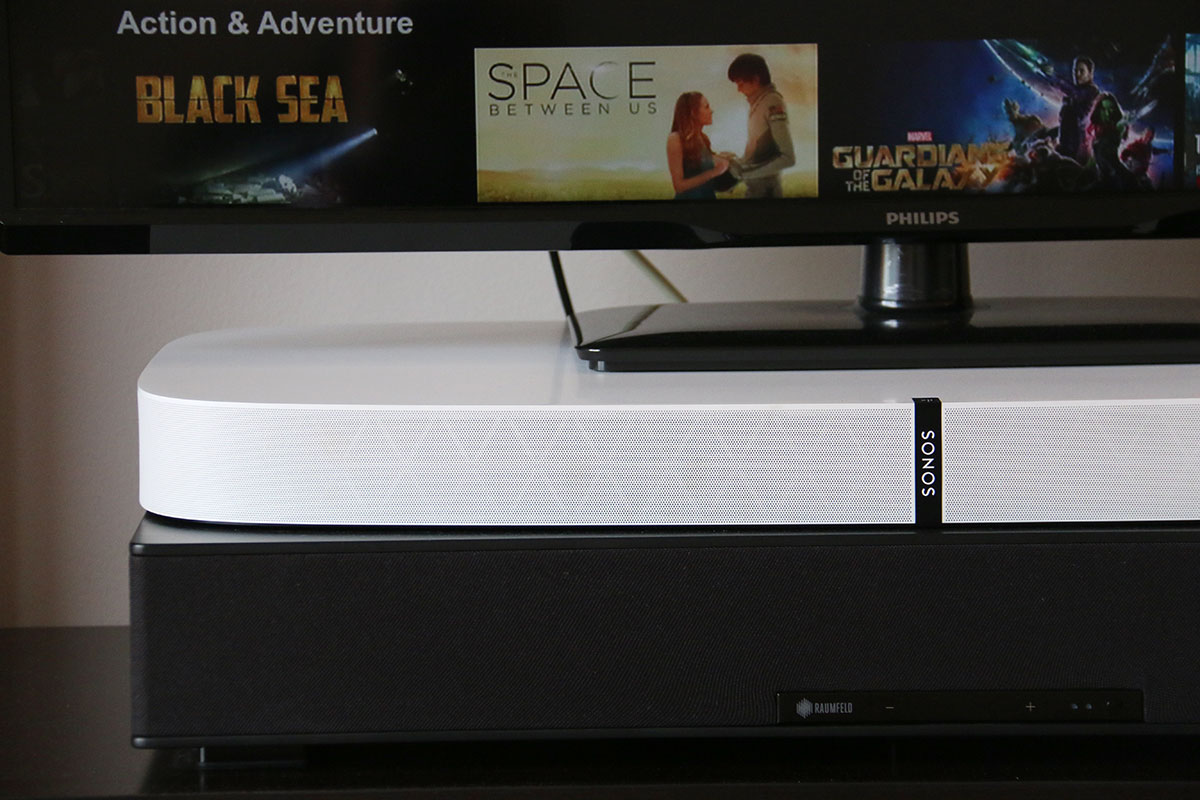
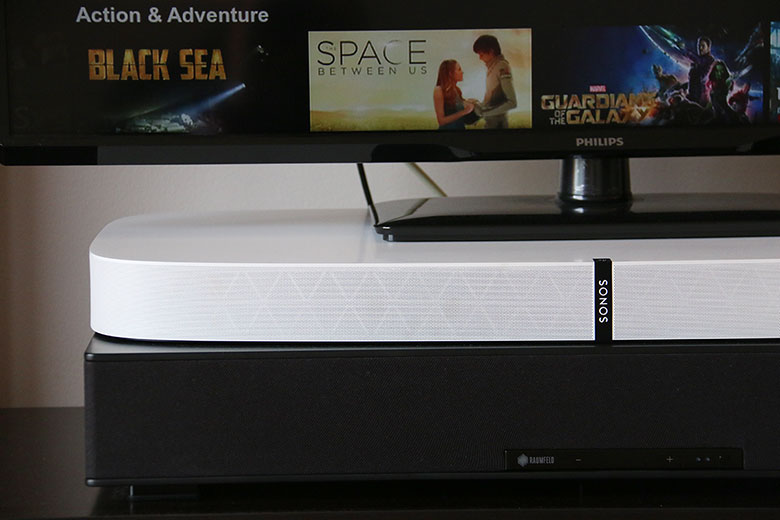
The Master Switch


The Master Switch
We’ve never understood why more people don’t use soundbases. They are an absolutely perfect bridge between a basic TV speaker system, and a full surround home theater setup. And yet, hardly anybody seems to go for them, preferring to stick with things like soundbars. SONOS have decided to change that – and with their PLAYBASE, they’ve rewritten the rulebook on soundbases. In this review, we break down the PLAYBASE’s sound, design, packaging and accessories, specs and more. To see how it stacks up, see our list of the best soundbases.
Let’s get the negatives out of the way first. This is just a short interlude, we promise, because with the SONOS PLAYBASE, there are a lot of positives. The low end, while enjoyable, could sometimes be a little bit overpowering. It often felt somewhat out of odds with the actual volume - the sub-bass of an explosion, or sound effects hit, rattled the windows when the overall volume was at a fairly normal level. This is something that didn’t really feel improved by the app’s EQ. And very occasionally, it sometimes felt like the mids weren’t quite as clear as they could be.
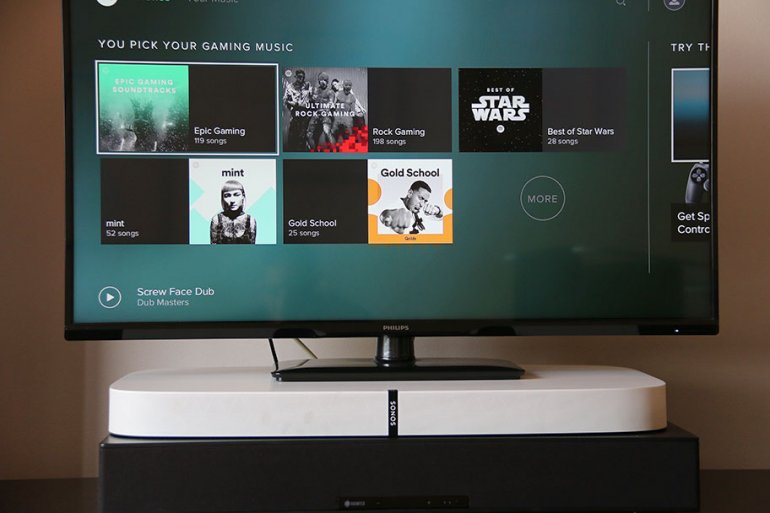
But overall, we thought this speaker system performed incredibly well – much better than the otherwise very good (now discontinued) Raumfeld Sounddeck (full review here). We happened to have had it in the office at the time for testing, and would like to point out that it costs significantly more. The sense we got from the PLAYBASE, minor glitches with the bass and mids aside, was one of rounded warmth, with a sound signature that struck a nice balance between the different elements, and provide an absolutely spectacular soundstage.
The ten speakers in the base each have their own Class D amps, which are light, highly efficient circuits that don’t run too hot. We thought the combination worked incredibly well when positioning things around the room. They’re never going to compete with a dedicated 5.1 or 7.1 setup, but that doesn’t stop them from delivering a magnificent experience when it comes to movies, or Netflix series (like, for example, Stranger Things). To be clear: this is never going to beat a high-end speaker system from the likes of MartinLogan or Paradigm. It’s never going to please a dedicated audiophile. But that doesn’t stop it from being very good – even far better than its three figure price-tag would suggest. It easily manages to beat comparable products from SONOS themselves, including the SONOS PLAYBAR – a sound bar which had a similar sound signature, but much less power. Both the PLAYBAR and the PLAYBASE have an identical price ($699). So, if you prefer the former, there’s nothing to stop you from going forward
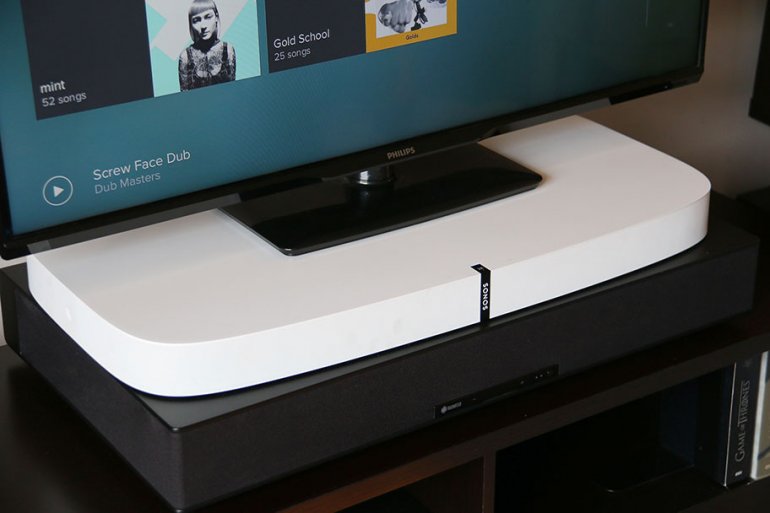
In terms of music, the PLAYBASE kept up this level of quality, presenting tunes with kicking (and surprisingly controlled) low-end, and crisp detail in the highs. We ended up using it as an all-purpose speaker, listening to music while we worked on the site, and using it in the evenings to watch TV. It’s ability to move seamlessly from one style to the other makes it a fantastic home audio solution, and we think the sound quality could easily justify adding another figure to the price. The high-end lovers of the world may scoff, but the rest of us will be too busy enjoying the noise this thing puts out. We thought it edged out a challenge from the Bose Soundtouch 300 (also at the identical price of $699). Although, that model does give you Amazon Alexa functionality.
One thing that is worth noting: SONOS offers a terrific tuning function on the app, TruePlay, which we’ve used with great success before - but it’s only available on iOS, thanks to the lack of standardization among mics on Android phones (the app itself is available on both, just not the tuning function). Now that we only own an Android phone - because our iPhone died - we couldn’t test this on the PLAYBASE. We have no doubt that it would have worked well - most things from SONOS usually do - but it’s frustrating that we couldn’t use it due to our lack of iOs capabilities.
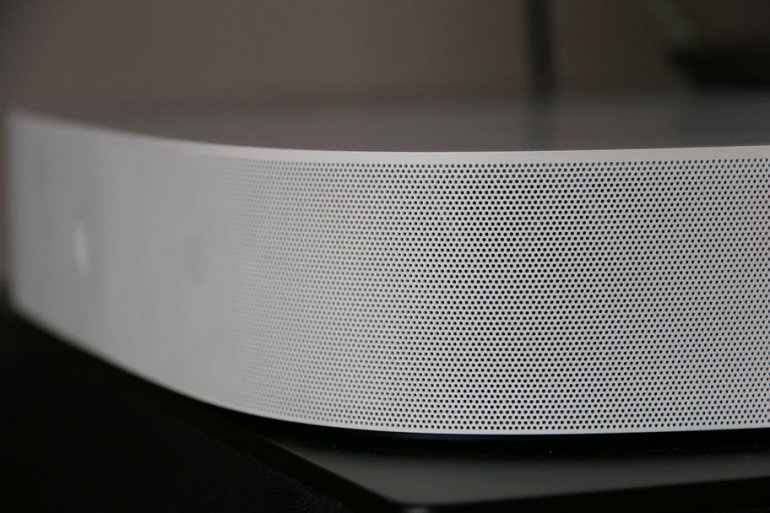
You want to know why SONOS are doing so well in the home audio space? It has absolutely nothing to do with how they sound. It has nothing to do with their design - which is excellent, by the way. No, the biggest reason why they are absolutely crushing at the moment is because getting them set up is a total breeze. In under five minutes – much of which was spent manoeuvring the admittedly heavy PLAYBASE into position – we had audio going. SONOS, very sensibly, uses their free iOS/Android app to guide you through the setup process, and, provided your WiFi is working OK, it simply could not be easier. The instructions are clear and easy to follow, and its dead simple to connect to other wireless speakers in the house, as well. We had our PLAY:3 wireless speaker (full review here) talking to the PLAYBASE without too much trouble.
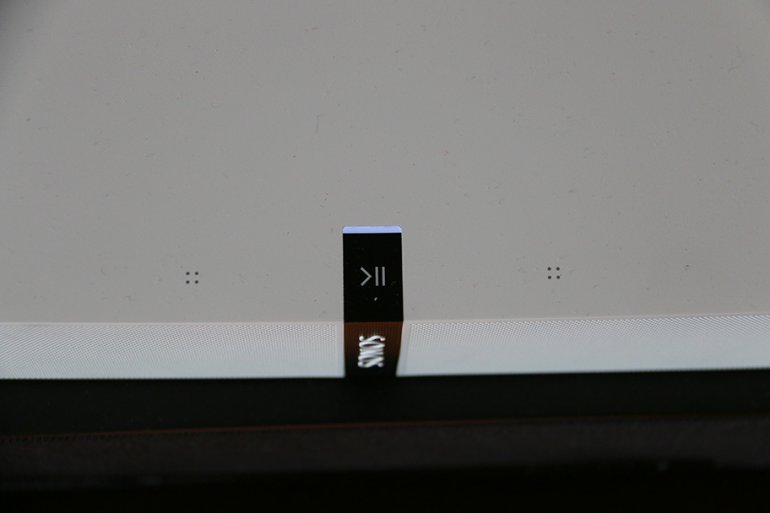
This is a particular area that SONOS do better in than almost anyone else. In a world where just about every piece of audio equipment available comes with a clunky, jargon heavy instruction manual, the PLAYBASE – and other speakers from the company – are a revelation. SONOS also make it easy for your TV remote to talk to the PLAYBASE, which was a delightful and unexpected surprise. However, while we love the idea, this was where we uncovered one of the few glitches in the system. Adjustments by the volume on the TV remote didn’t reflect in the app, meaning that, sometimes, we’d return to find that the volume was either too soft, or too loud. It’s a minor problem, though, and hopefully it’s something that the company can sort out in the next iteration. Knowing them, it probably won’t take much more than a software update – which the PLAYBASE will happily download automatically.
You can use the system, by the way, to play music independently of whatever audio it’s putting out from your movies or series or sports. When you switch back, the audio automatically pauses. Most of the major streaming services, including Spotify and Apple Music, are all set up on the app, and works with barely a hiccup. It’s actually worth stating this again: if you’re used to more traditional audio equipment, then the absolute ease-of-use will come as a joy. But then, what would you expect of a company that sneakily hides a Stranger Things easter egg in its app?
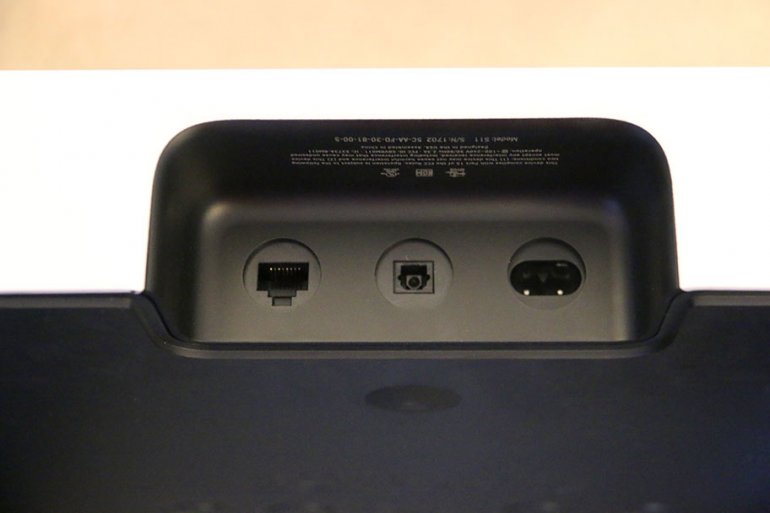
Like all soundbases, the PLAYBASE has a fairly conservative body – at least from a distance. After all, if your sole modus operandi is to work as a speaker system that can hold the weight of the TV, being anything other than flat and rectangular is probably going to be a problem. But there’s no denying that, in the world of soundbases, which is populated by boring black boxes, the PLAYBASE is a looker.
At just over two inches high, it sits comfortably underneath any TV you can throw at it (up to 77lbs - and on second thought, perhaps throwing TVs is a bad idea). There are no corners here: the edges on the sides are rounded, with a pleasing curve that draws the eye. The speaker drivers themselves – six midrange drivers, three tweeters, and one woofer – are all hidden behind an almost invisible grill, made up of thousands upon thousands of tiny pinholes.
It’s these pinholes that give you an idea of just how much thought and care has gone into the creation of this soundbase. On the front, where the majority of the drivers sit, the pinholes are of a uniform size. But as you look around the sides, they get a little bit wider, which is designed to allow as much air as possible to move when the lower frequencies kick in. It not only works really well, in terms of the sound – which we’ll talk about in a little more detail below – but it actually looks really cool, assuming you’re close enough to notice it. Compare all this to something like the Atlantic Technology 3.1 HSB, Which, while performing very well in terms of audio quality, is just boring as hell to look at - and costs more, at $799 to the PLAYBASE’s $699.
Although you’ll do most of your control of this wireless speaker system via the app on your phone, there is the option of physical controls too. Above a slim logo band on the center of the speaker sits a play/pause button, and two volume controls, all of which respond to the lightest touch. Round the back, things are predictably quite simple. Although it’s disappointing not to see an HDMI port, which will open up the functionality a little bit, you do get an optical port for connecting to your TV or console or Blu-ray player, as well as a power port and an ethernet connection, for when your wireless goes wonky.
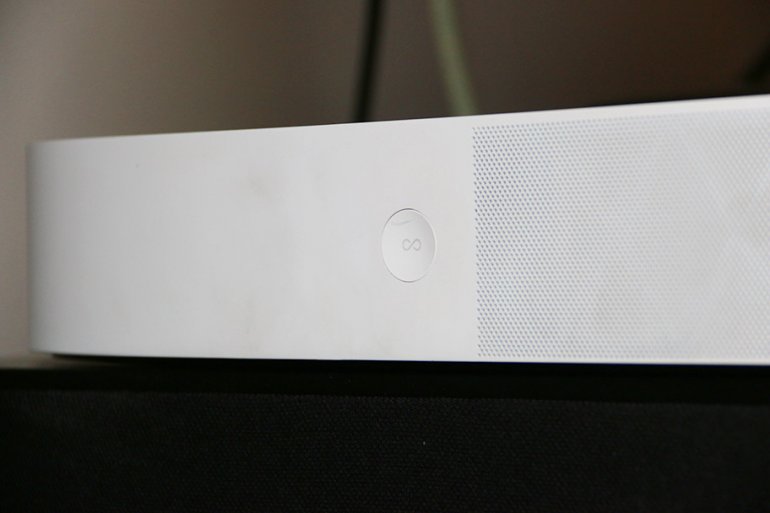
If you needed yet more evidence that human beings designed this, you only need to look at the packaging, and the accessories that come with it. An intelligent hand has gone into creating the box that the PLAYBASE comes in. It’s a simple design with a lockable, lift-off lid, and a refreshing absence of the endless polystyrene and plastic that seem to shroud most speaker systems when they arrive at your apartment. The PLAYBASE itself nestles inside a cardboard insert, and lifts out easily. You definitely don’t get this amount of thought with the PLAYBASE’s competitors, like the $490 JBL Cinema Base.
You’re going to think we’re crazy here, we want to talk about the manual. It’s not so much an instruction book as it is a step-by-step guide to showing you what the system can do. Not only do SONOS recommend particular tracks, like Beyonce’s Daddy Lessons, but they also tell you what to listen for, and what the system does to the individual elements of the track. It’s above and beyond what we expect from something as mundane as an instruction manual, and once again, it shows that, when it comes to user experience, SONOS are just about unbeatable. You also get an Ethernet cable and an optical cable alongside the power lead, meaning you can get set up very quickly indeed.
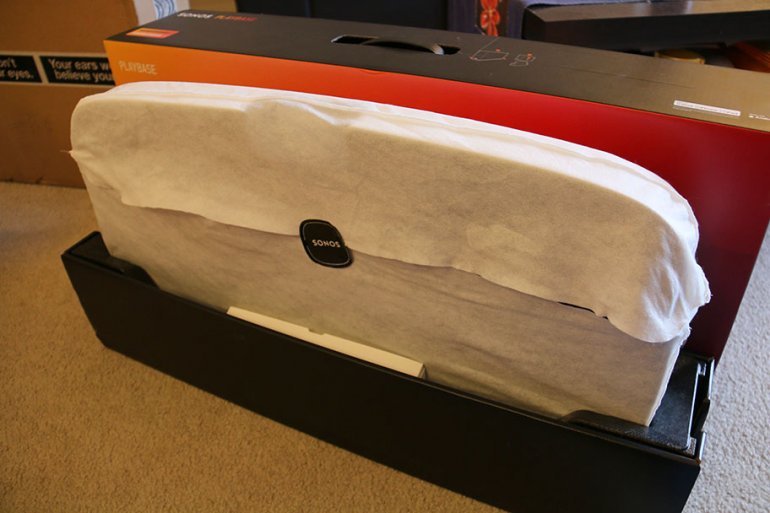
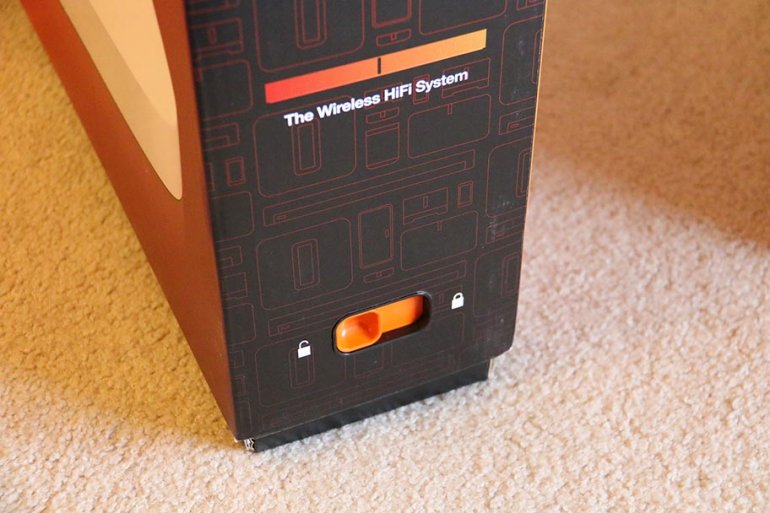
| Base | Price | WR* | Connectivity | Watt.** | Sub. |
|---|---|---|---|---|---|
| SONOS PLAYBASE | $699 | 77lbs | WiFi | Unknown | Yes |
| Atlantic Technology 3.1 HSB | $799 | 60" | Bluetooth | 150 | Yes |
| Cambridge Audio TV5-V2 | $375 | 66lbs | Bluetooth | Unknown | Yes - x 2 |
| Bose Soundtouch 300 | $699 | N/A | Bluetooth | Unknown | No |
| SONOS PLAYBAR | $699 | N/A | WiFi | Unknown | No |
*WR = Weight Rating. Yes, we know it's in both pounds and inches. Sound companies are weird, man.
**Watt. = Total RMS Wattage
Want Even More Master Switch? Sign Up For Our Weekly Newsletter!
One of the few soundbases available that can give the PLAYBASE run for its money is the Atlantic Technology 3.1 HSB – in sound terms at least. The 3.1 speaker setup provides some stunning positioning, as well as some magnificent low-end. However, the design and usability is not nearly as good as the PLAYBASE, and overall, AT’s baby can’t touch the SONOS for experience. However, we can’t get enough of that glorious sound. It is, however, more expensive - $799 to the PLAYBASE’s $699.
One of the things we hope will change in the aftermath of the PLAYBASE’s release is the number of models available. There are still relatively few companies that dabble with this particular type of product. One of them is Cambridge Audio, and we've got a real soft spot for their TV5-V2. It’s a big improvement on the first version, particularly in the bass, which is pushed out via two huge woofers, and which makes for addictive listening. The design follows the Atlantic Technology aesthetic of Big Black Box, but it still works well, and we think it’s one of the best cheaper alternatives to the PLAYBASE. It costs $300 - just about half the price of the $699 SONOS base.
We get plenty of people wanting to know the differences between the PLAYBASE various sound bars. So, let’s compare a few. One of its biggest competitors is the Bose Soundtouch 300 soundbar, and although it’s hard to compare them like for like – on account of them being different products – you can still make some judgements. They’re actually reasonably similar: they cost the same ($699) and both deliver 5.1 surround sound, or approximation of it anyway. But we do think the Bose suffers by having fewer drivers than the SONOS, and not being quite as powerful, particularly in the low end. If you have the space for it, you should definitely go for the PLAYBASE, which is a better product in every way.
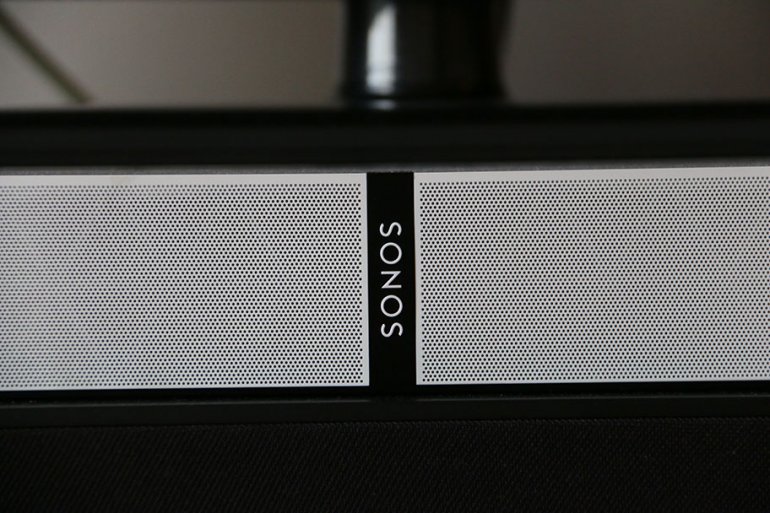
It’s also worth talking about another SONOS product, the PLAYBAR. It is identically-priced to the PLAYBASE ($699) so we can safely leave the choice to the specs, and to the space you have available. One of the big advantages of the PLAYBAR is that it works with wall mounted TVs, whereas the PLAYBASE does not. However, the PLAYBASE delivers much better bass. Beyond that, the sound signature and feature sets are virtually identical – the only real difference we can think of is that the PLAYBAR has an extra ethernet port. Why? We have no idea. What it comes down to is this: if you have a wall mounted TV, get the PLAYBAR. If you don’t, get the PLAYBASE.
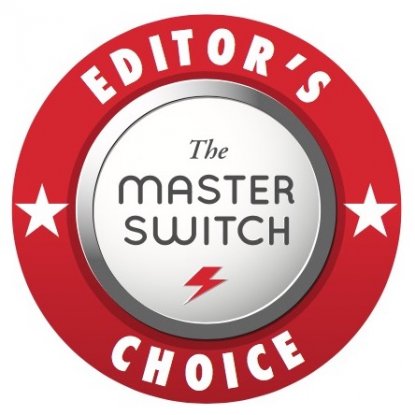
You know what? Actually? PLAYBASE wins. This isn’t a perfect product. It does have one or two tiny design issues, and the sound could use a little bit of refining. But we’re going to give it the Editor’s Choice award anyway, which puts it in some pretty rarefied company. When a speaker system is this easy-to-use, this welcoming, and offers design and overall sound quality vastly out of proportion to the money you actually pay for it, that deserves to be celebrated. As far as we’re concerned, this is the ideal solution for anybody without the space or funds for a full home theater setup. It knocks just about any soundbar we’ve ever heard out of the park, and makes short work of its soundbase competition.